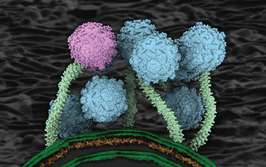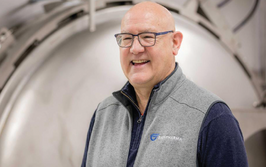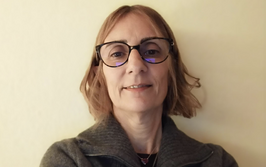When Fakes Attack!
Counterfeit medicines are on the rise. Regulators are driving serialization and tamper-evident packaging initiatives, but is the pharma industry fully primed to defend against fraud and push back the forgeries?
Mark Davison |

Perhaps 10 or 15 years ago, counterfeit medicines were mainly limited to lifestyle drugs, such as Viagra, which people purchased from rather dubious sources on the Internet without a prescription. (No doubt some of you will be thinking, “you get what you deserve (or pay for),” and I think most people actually do understand that prescription medicines should be obtained through legitimate channels and prescribed under the supervision of a doctor.) Sadly today, counterfeit medicines can be found anywhere – including the legitimate supply chain. All classes of drugs – at all price levels – can be affected; we even see counterfeits of extremely cheap drugs that only cost $1 to begin with... The bottom line is that wherever there is any profit to be made, counterfeiters are waiting. It’s no longer a problem that only plagues Internet sales and people who should perhaps know better. In general, most of us don’t choose where we get our prescription drugs from; rather there is an element of assumption that the medicines we receive from our pharmacies and healthcare professionals will be authentic.
In Europe and North America, I do not believe that counterfeits are flooding the market and reaching patients in any great numbers – those of us who live in these regions are fortunate. But even here, we do see occasional cases that generate a lot of media attention; fortunately, suspect products are usually identified and removed pretty quickly. Invariably, such instances occur when somebody tries to cut corners or attempts to make some extra money on the side (saving or gaining money are big temptations). For example, there have been cases in the US where dispensing doctors have bought drugs on the gray market for a discount, without asking too many questions about the origin. On many occasions, these drugs are not actually counterfeits, but have been diverted from other countries (which is another problem outside the scope of this article)...
If we look at Asia, Africa and some parts of Latin America, there is a much larger problem with counterfeit medicines – and it is very much a daily danger that goes under reported. In some cases, the supply chain itself is controlled by criminals looking to profit from fake medicines – apparently, you can make more money selling counterfeit medication than you can selling heroin. But the penalties if you get caught are tiny in comparison. When viewed from the perspective of pure criminal business evolution, it’s clear why the problem is getting worse. In addition, counterfeiters are moving from shanty back street workshops to a more industrial and organized scale. When counterfeits are seized, there are often multiple tonnes of products, which, superficially, appear to be well made with excellent packaging. Clearly, the products themselves will not be up to standard. And though some counterfeits do contain active ingredients, the dosage level will vary considerably – and some of the other ingredients can be downright dangerous.
The ace of trace
The pharma industry is not standing idly by as counterfeiters run away with their brands. The buzz word is ‘traceability’, and in the last few years drug makers and regulators have been working hard to make the whole supply chain more traceable, so that we know where the drugs were made, whose hands they passed through, and when they were dispensed. In particular, we’re seeing this in Europe and the US, as well as in China and some Latin American countries. Eventually, I think most of the world’s markets will adopt similar regulations. However, a word of caution: traceability is not a panacea – the ‘bad guys’ can still find other ways to distribute their fakes – but it does undoubtedly make it more difficult for illegitimate products to be slipped into the mainstream supply chain.
Traceability is being pushed in Europe through the Falsified Medicines Directive and in the US by the Drug Quality and Security Act. The deadline for complying with the European Directive is in 2018, where as the US is looking to roll out a more comprehensive system in various stages by 2023. Broadly speaking, the two systems are reasonably parallel and both involve serialization, which moves beyond the traditional batch-level coding. The batch number tells you if the product was made last Tuesday or the Tuesday before, but now every pack rolling off the production line (sometimes at a rate in excess of 300 packs per minute) will have its own unique ID encoded in a data matrix.
The codes in both the US and European Union serialization systems will be based on a set of standards run by GS1 – a neutral, not-for-profit international organization that specializes in barcode standards. Therefore, countries won’t need their own data and frameworks to deal with recording a serial number for each pack, an expiry date, and so on. In Europe, the serialization system will work as an ‘in and out’ verification system. The manufacturer will inform a central hub which serial numbers and which packs are going to be uploaded into the supply chain, and that information will be shared with regulatory bodies across the EU. When a pharmacist receives one of those packs at the pharmacy, he or she scans the code, which queries the database and (hopefully) authorizes the code as authentic so that the drug can be dispensed. Essentially, the code is checked in by the manufacturer and checked out by the pharmacist. But there won’t be 100 percent transactional control at every point in between.
In the US, the end goal is to capture every transaction. The idea is that the manufacturer will make a number of items and record a number of codes. When the items are passed to a distributer, the transaction will be recorded in the database. The distributor may then sell the items to someone else and again the transaction will be recorded. At any point, you should be able to look up the entire history of those items within the supply chain. It’s a very ambitious system. But are manufacturers ready for it? In fact, are they ready for either system? Well, it depends on which companies you look at.
When trying to figure out awareness of a particular issue, my rule of thumb is to look at who goes to conferences. Conference attendees are largely from big companies – and many are looking to share their knowledge and learnings, which is great. Most of the big companies are well prepared for serialization and have already made significant investments. Most of them also have small teams focusing solely on serialization and anticounterfeiting. But the people I don’t see frequently at conferences are those from medium and small companies, which suggests a lack of awareness (and perhaps even denial). Smaller companies have fewer in-house experts to deal with specialized issues, so there will likely be a big wake-up call when there is a realization that something needs to be done – and quickly – to continue trading.
The deadline for the Falsified Medicines Directive is coming up fast. And though I don’t think there is anything in the Directive that is unfeasible for small companies, if they leave it too late then there will be a classic resource crunch; there simply aren’t sufficient numbers of people in the world with the expertise or sufficient numbers of equipment suppliers who can be available with a six-week turnaround. The danger of being late to the party is that you may have to get in line for what you need. And it may not be ready in time.
My advice is to start early to avoid the rush and to start senior, so that you can get things moving quickly. In my experience, if brand protection, product integrity or serialization projects are driven by a relatively medium-level technical manager, then there may be delays and difficulties because that manager has to try to persuade multiple department heads to collaborate and spend money. Implementation of an anticounterfeiting strategy is a responsibility that should be given to someone very senior, such as an executive vice president or chief operating officer. The individual driving the campaign must be within earshot of the chief executive, because it means decisions will be made earlier and more easily – and rapid progress can be made. Counterfeit products are a corporate liability issue and a corporate reputation issue. It is something that should concern the board of directors. Certainly, you need the technical managers to pull the project together, but corporate buy-in is critical.
Data, data everywhere
Serialization presents a number of mechanical challenges. You may be printing on a variety of material from cardboard, to labels, to glass vials and it will require changes to packaging lines. The European Directive also calls for tamper-evident features to be added to packaging, which will also necessitate manufacturing changes. But I think the “line-level” hurdles can be overcome relatively easily and there is a lot of know-how in the area.
The biggest challenge is data management. You will need to reconcile all of the numbers on the packs throughout the supply chain. If the code doesn’t scan properly in the pharmacy six months later then you, the manufacturer, are going to get that medicine back as a return. You need to have the processes and procedures set up so that you can deal with both the data and physical inventory. Worst-case scenario? You could be out of the market place, if you cannot implement the system correctly and efficiently.
Transactional information is very valuable because it shines a torch into the corners of the supply chain that drug companies usually find quite hard to illuminate. There is a lot of activity in this area; for instance, we’re developing easy to use mobile phone tools to enable companies to use their sales representatives to quickly verify serialization codes, take pack shots and report suspect packs. Another question arises as the coded pack makes its way to the patient: who owns the transaction data? At the far end of the supply chain – the interface between pharmacist and patient – there are always sensitivities about information and privacy. Most of the traceability systems being discussed in the US and the EU do not involve any medical information about the patient, so there won’t be a direct link to patient records. However, pharmacists may attach value to the transactional information they generate when dispensing. Again, drug companies would probably pay for this sales information – they already do, via IMS Health and others. We could therefore see a shift in how companies monitor, map and optimize their supply chains.
Avoiding an arms race
Beyond serialization, another way to fight fakes is to incorporate security features into the packaging; for example, by making the packaging tamper-evident or by adding visible features, such as holograms. However, such features are often more suited to over-the-counter-medicines rather than prescription medicines (which have plain packaging). Indeed, many of the features pharma companies choose to incorporate are actually deliberately invisible, such as covert security inks, chemical tracers and even DNA markers. Each drug company will understand what every mark on their packaging means and will be able to tell if a product is genuine or fake. Of course, the reasoning behind covert features is that anything visible will be seen by counterfeiters – who will probably be able to make rough copies that can fool the general consumer within a matter of days. Using visible features quickly leads to an arms race, which can get expensive as you explore ever more distinctive features.
If you have to explain how to interpret a complex visible feature with a leaflet or a newspaper campaign, then it’s probably not going to work very well; the general public will be easily fooled by something that looks superficially and even remotely similar – and most consumers don’t spend too long assessing which pack of medicine to buy. It’s another good reason why the majority of pharma companies use solutions that are invisible to the general public.
However, methods that involve patient interaction can have some success. For example, in Nigeria, there have been initiatives using scratch off labels on medicine packs. Beneath the label is a unique number that you text to an SMS service to check that the medicine is authentic. There are still holes in the system, but the Nigerian drug regulators believe it has had beneficial effects in reducing the incidence of fake products.
In India, one of our customers has printed visible alpha-numeric codes onto packs as part of a tuberculosis adherence program. One of the problems with TB medication is that the regime is quite complicated so patients can forget to take it. The project involves a medical worker registering the drug with the patient when the medication is prescribed by asking the patient to use their mobile phone to text the printed code on the pack to a verification service. This firstly checks authenticity, and then provides an ongoing follow-up and reminder service to the patient to help them keep up with their medication. The program has been funded by the Gates Foundation and USAID, and has been shown to increase the beneficial outcomes of TB treatment programs. It’s a great example of the convergence of security and improving medical outcomes.
No problem?
As I’ve already mentioned, I don’t believe that there is a huge issue with counterfeiting in the Western markets. Though of course, any fake drug is dangerous and the harder you look, the more you may find. We have had customers who have been very surprised to learn that they have a counterfeit issue in a particular country with products that they considered to be low volume and low profile; they always thought that no one would consider copying the product. But suddenly, they realize they have a problem that needs to be fixed.
Globally, counterfeits are an important problem and we can’t ignore it because medicine and health are global issues today. Fake medicines don’t just pose a danger to patients themselves – they can also harm the effectiveness of existing medicines. One of the issues that I’m concerned about is how fake drugs, particularly fake antibiotics and antimalarials, are exacerbating the drug resistance problems that the pharmaceutical industry is trying to solve.
Most companies view laws such as the EU Falsified Medicines Directive and the US Drug Supply Chain Security Act as a compliance obligation. But beyond the obvious supply chain benefits, I think that intelligently designed anticounterfeiting operations will also allow the industry to make better use of the potential of mobile health. If you have a unique code on a box that can be read automatically by a mobile phone, then you could have the beginnings of a new way to reach patients. I certainly wonder what doors that will open in the future...
Read All About It
Mark Davison is an international consultant on anti-counterfeiting and serialization. He is the author of “Pharmaceutical Anti-Counterfeiting: Combating the Real Danger from Fake Drugs”, published in 2011. Notably, it’s not intended as a technical know-how manual – Davison says there’s no point as counterfeiters also tend to read around the subject – but it does provide a single volume primer or “eye opener” for general managers who understand that counterfeits are an issue, but aren’t sure how to deal with it. It’s been popular in the industry, with some companies buying a few hundred companies to give to their staff. Davison is currently working on the second edition, which will be out in 2016.



















